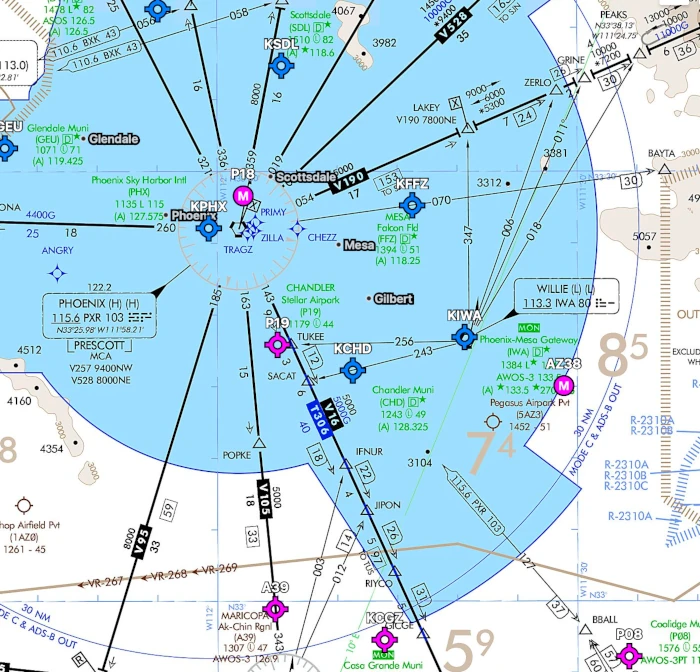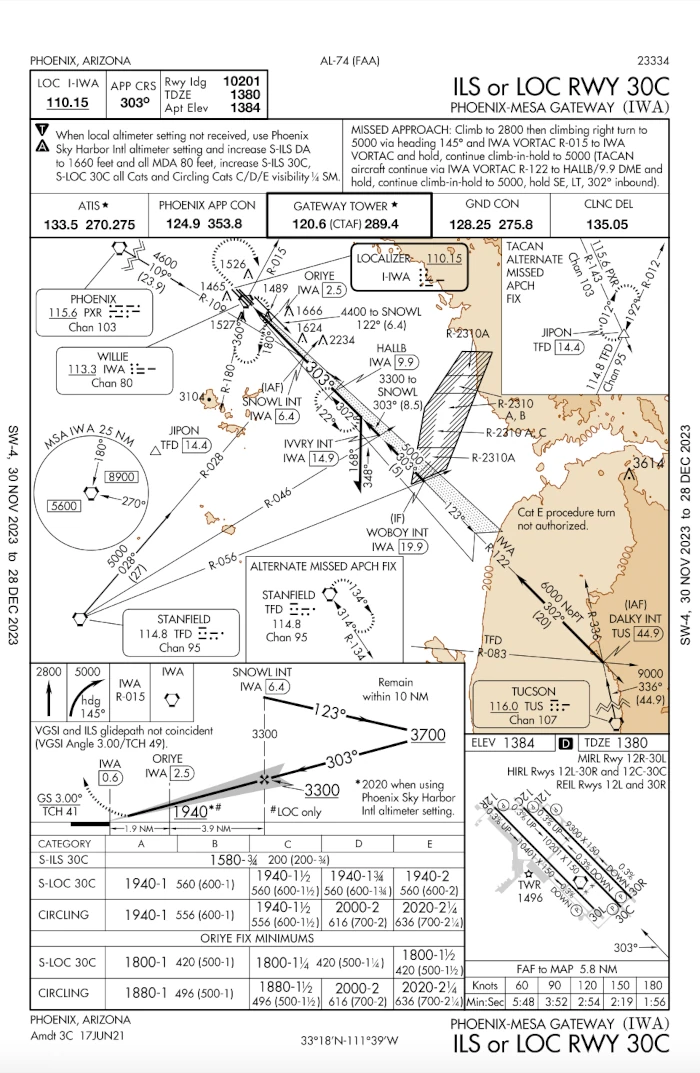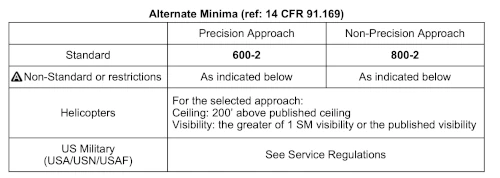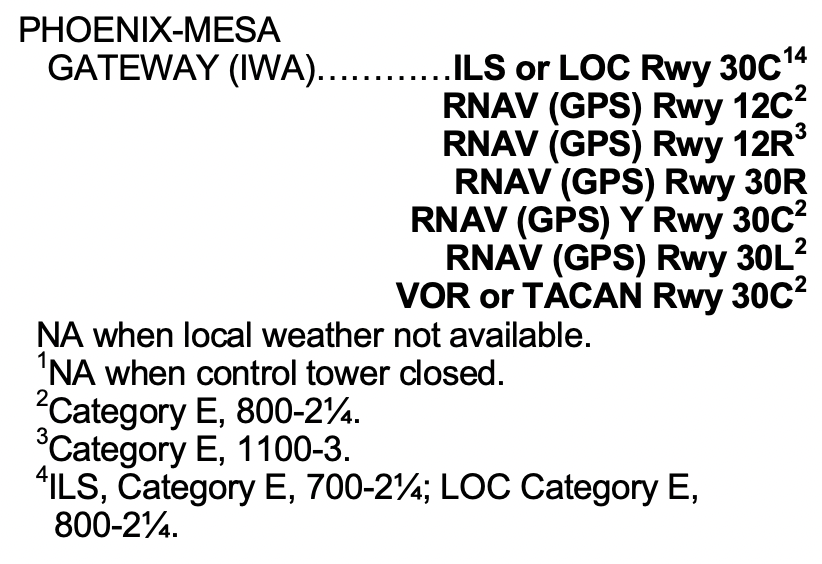
Alternate Airports in IFR Flight Planning
Instrument training introduces you to new regulations and procedures. Instructors and examiners may frequently pose a question about planning a night IFR cross-country journey with passengers to a specific airport. This question is purposely vague and ambiguous. The question delves into various pilot prerequisites, including instrument and night currency, and a valid medical certificate. Additionally, it encompasses considerations related to the aircraft, such as airworthiness, registration, and the necessary equipment. Then it looks at the route you may take and why you would choose such a route. The question sparks valuable discussions regarding the essential requirements for undertaking such a trip. Part of the discussion that will inevitably come up is the necessity of having an alternate airport when filing and flying IFR.
What is an alternate airport?
An alternate airport is a backup for when you cannot navigate to or land at your destination. For instance, if the weather deteriorates during your approach, and you can't see the runway and you go missed, did you plan for and file an alternate? Let’s look at FAR 91.169.
Alternate Airport Filing Requirements
Commonly known as the “1, 2, 3” rule, you need to file an alternate if the following conditions are met:
-
If the weather at the destination, for at least 1 hour before and 1 hour after the estimated time of arrival, is forecast to have at least a 2,000 foot ceiling (above the airport elevation) and visibility of at least 3 statute miles, you are not required to list an alternate airport in the IFR flight plan.
-
If either the ceiling or visibility is forecast to be less than 2,000 feet or 3 statute miles during that arrival window, you are required to file an alternate. Also, the destination airport must have at least one instrument approach procedure or an alternate airport will always be required.
The “ONE” is for 1 hour before and after.
The “TWO” is for a 2000 foot ceiling.
The “THREE” is for 3 mile visibility.
Even if these conditions are not met, it is still a good idea to be thinking about alternates when IFR (and VFR) flight planning.
Cross Country to Falcon Field
You’re planning a trip from KAVQ to KFFZ. You just got some pancakes and coffee at the Sky Rider Cafe over at Marana Regional Airport. And now you want to go home to Mesa, AZ. The weather report is showing that there is some weather coming in. A 1000 foot ceiling and 1 mile visibility that is forecasted. Do you need to file an alternate? Do you choose to go or no go?

Some nearby airports include KIWA, KCHD, P19, and KPHX. Factor in what approaches are available and also what the weather is looking like at the time of planning the flight. Make sure that the flight is within your personal minimums and you are current and proficient.
Making Phoenix Mesa Gateway an Alternate Airport
To keep going with the hypothetical example, let’s say we plan our alternate as KIWA Phoenix Mesa Gateway. They have a precision ILS approach for 30C. Let’s take a look at it.

The minimums for the ILS is 1580’ MSL 200 AGL and 3/4 mile visibility so with ceilings at 1000’ AGL and 1 mile visibility the approach looks doable as an alternate approach. However just because the minimums are under the 1000’ ceiling doesn’t mean that we can use this as an alternate approach.
Non standard alternate minimums Phoenix Mesa Gateway Airport
The standard minimums would be 600-2 for a precision approach and 800-2 for a non precision approach (FAR 91.169). These would be the weather requirements at the alternate airport needed to be able to file that airport as an alternate.

However, in the notes on the approach there is a black triangle with an A in it. The black triangle with an A signifies non standard alternate minimums.

We need to look at the alternate minimums which are found in the instrument approach procedure charts.

Under Phoenix-Mesa Gateway (KIWA) for the non-standard approach minimums for the ILS 30C, 1 and a 4 are superscripted. In the footnotes, it says that the approach is:
NA (not authorized) when local weather not available and
1 - NA when the control tower is closed and
4 - ILS/LOC category E have different minimums
Ensure that these minimums are met in your situation if choosing the ILS 30C at KIWA Phoenix Mesa Gateway airport as an alternate airport when filing IFR.
Fly safe and do your research
Flying is enjoyable, whether for a career or hobby, but safety is crucial. In instrument flying, understanding our limits and the set minimums is essential. Regulations exist for a reason – past aviators faced danger without them. Following procedures ensures our safety. Work with your flight instructor to fully understand regulations for both instrument and VFR flying. Enjoy flying, and prioritize safety.
Fly with experienced safe aviators that know the flight training industry.
We are a team of aviators that are experts in the flight training industry. We have decades of combined experience to get you safely in the air. Start your flight training today and see what we're talking about by scheduling a discovery flight.
NEXT STEPS
SCHEDULE A TIME TO TALK TO OUR TEAM
Let's discuss how we can help you achieve your aviation goals. Explore what the requirements are and what it takes to become a pilot. Click the big red button to schedule a time to speak with one of our team members
 SCHEDULE A CALL
SCHEDULE A CALL
Join the SimpliFly Community.
Like and follow us on social media.

